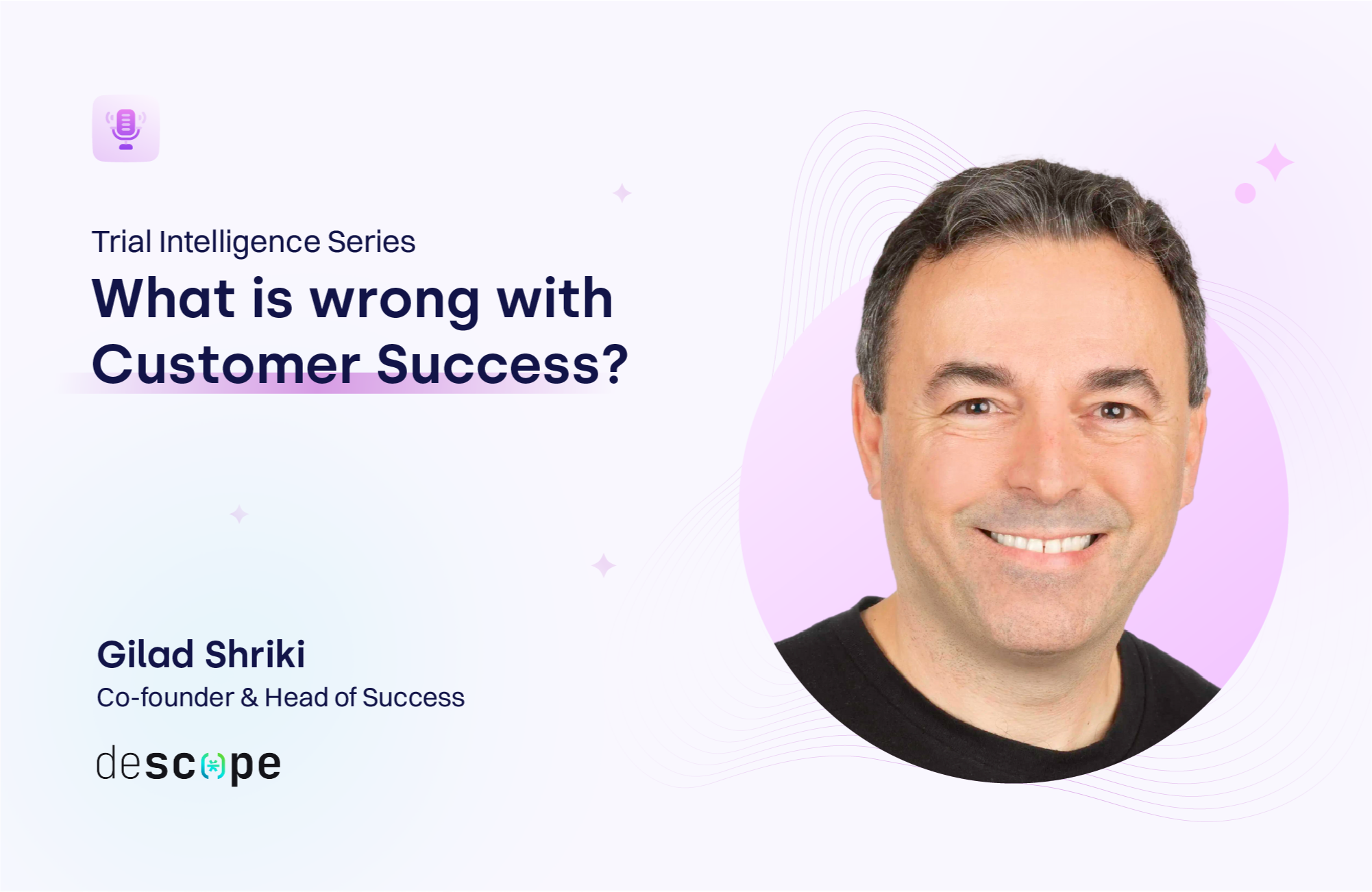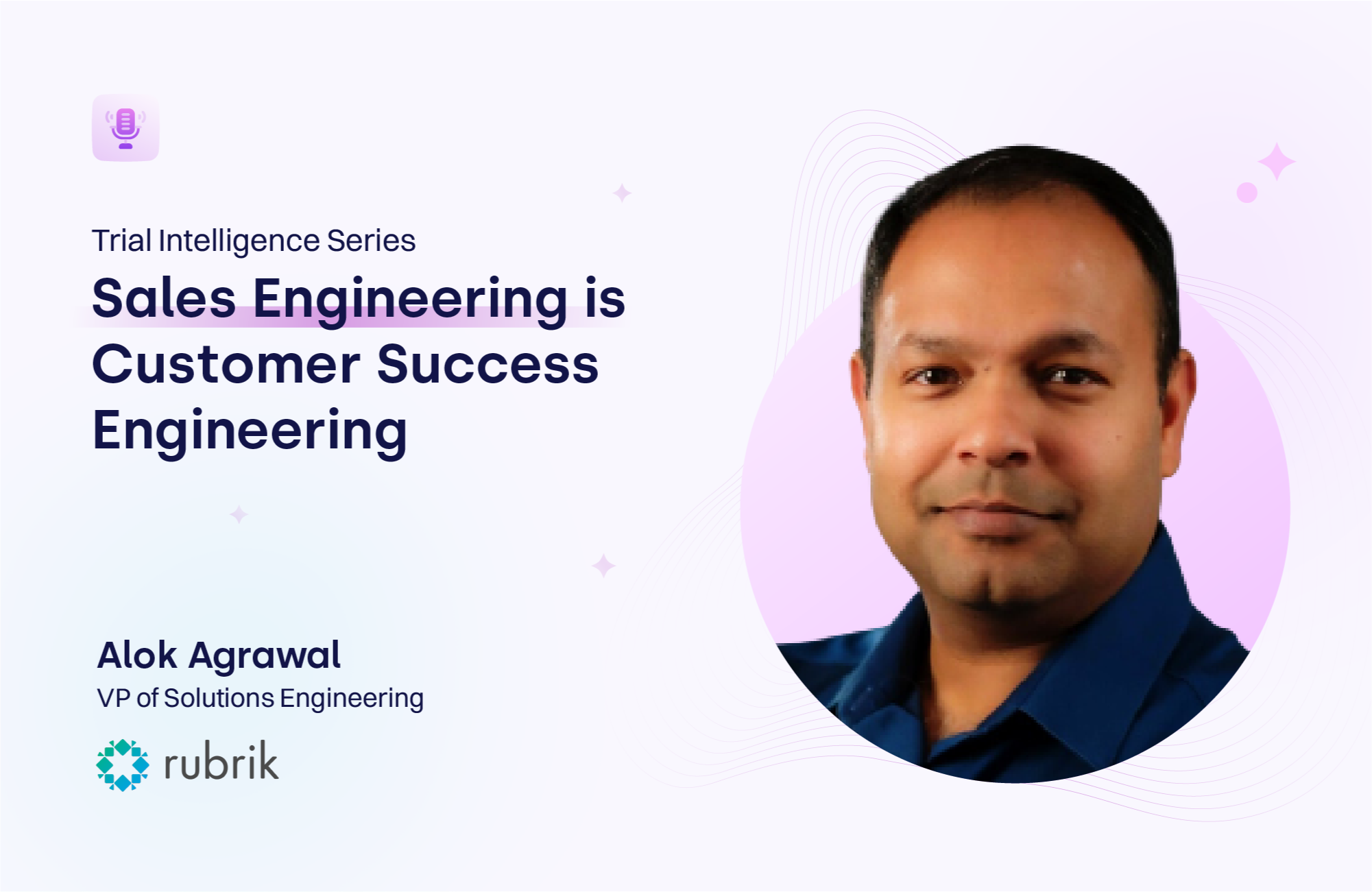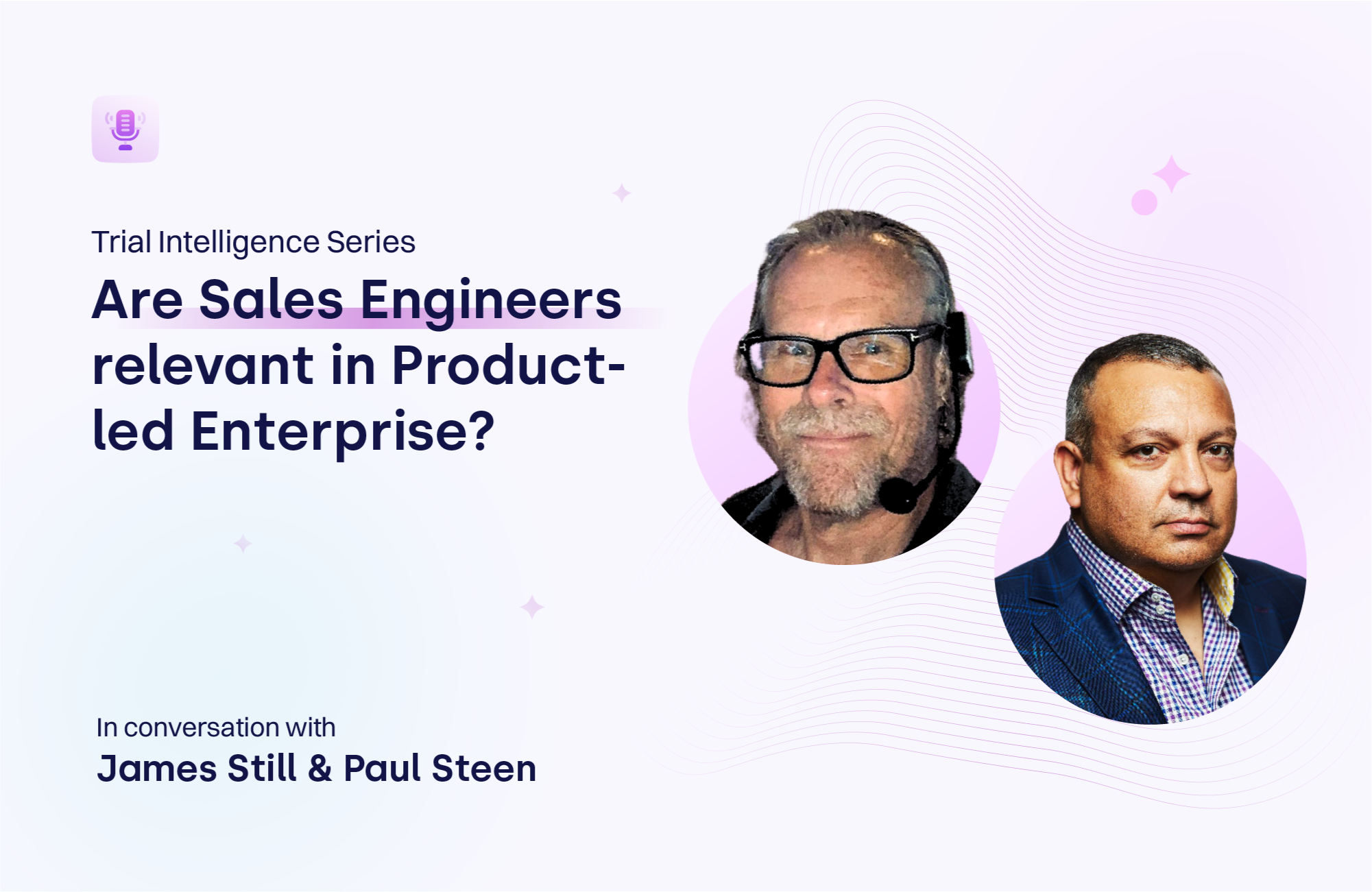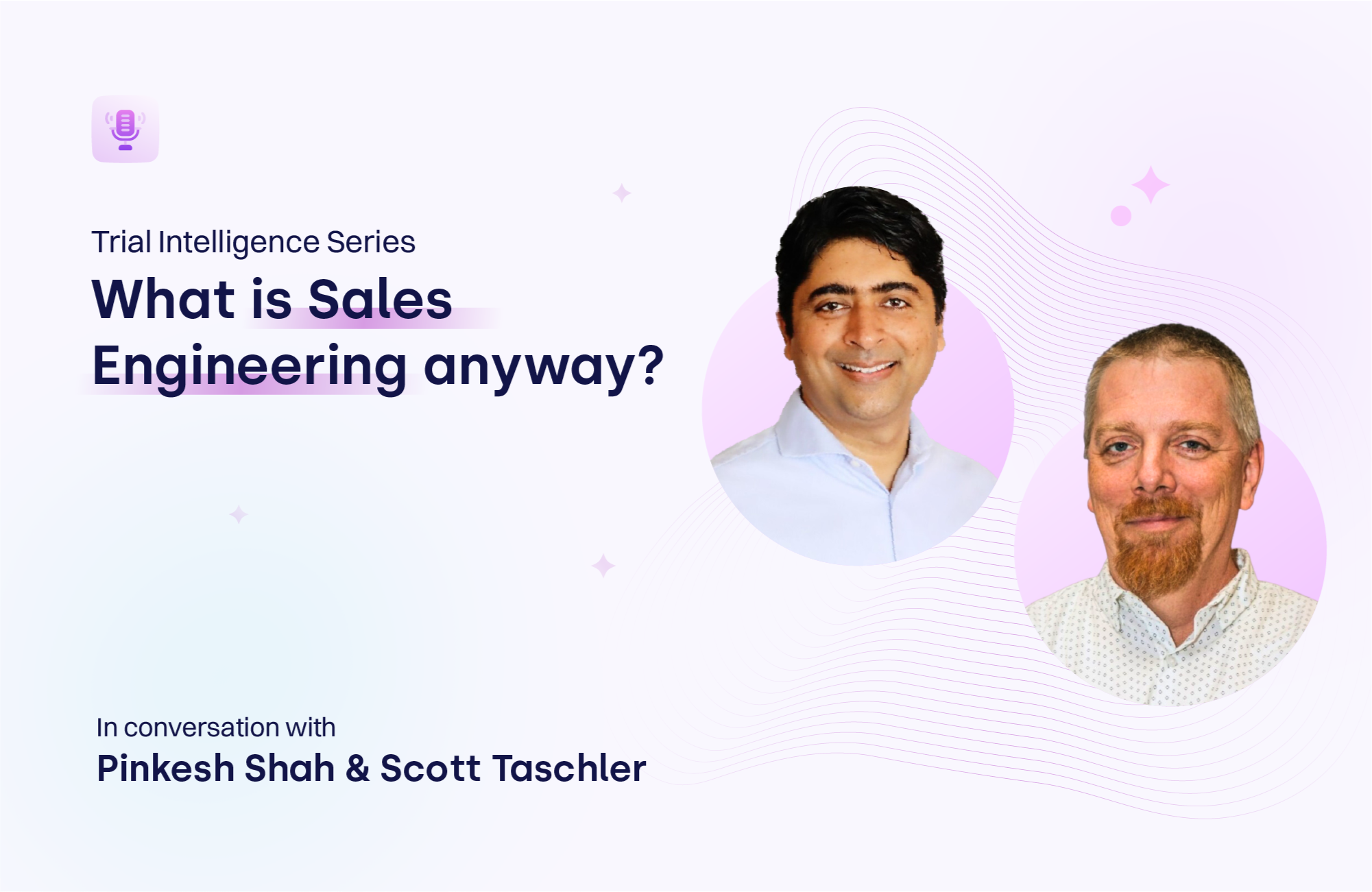TL/DR - Conventional customer success tools have been designed to automate the task of customer success managers/engineers. That is a fatal flaw in their design as they create work for CSMs rather than helping users achieve their goals. We need to adopt data-driven automation that uses journeys and nudges to help users achieve their goals.
Alok Shukla, in a conversation with Gilad Shriki, Co-founder of Descope, Former VP of Customer Success at Palo Alto Networks, on why customer success tools of today are problematic and why the future of customer success lies in data-driven automation.
👉 Listen now on Apple Podcast, Google Podcast, and BuzzSprout.
Or, you can watch the video podcast. 👀
Chapters
0:00. Introduction
4:56. Customer Success: Startup to Large enterprises
7:46. What do you want to automate?
9:32. Using data to visualize the journey and perform nudges
13:09. Why current CS tool struggle with data?
17:22. Should CS teams make sales pitches?
23:55. Should Product Managers be incentivized?
Transcript below
Introduction
I started as a software developer back then in the Israeli military. Then I went on to become a product manager and worked for McAfee. Soon, I switched to customer success or services and did the entire services organization in Demisto.And then, when we were acquired by Palo Alto Networks, I basically took over the VP of customer success for the Cortex line of business. So I think over time, I realized I like working with people. So I've been through like developer, product manager, and services, and, really, what I like working is with customers and enabling them and educating them to use products.
How did you manage the transition from managing customer success at Demisto to managing customer success at Palo Alto Networks?
At Demisto, we used Demisto to manage a lot of the customer life cycle because. After all, we needed an automation tool to manage the customer life cycle.And guess what? Demisto was free, and we had the best team in the world to deploy Demisto in our organization, so we used that too. When we came to Palo Alto Networks, we had to think about scale and size. Demisto was not designed for that.Palo Alto Networks has other products to manage the CRM aspects, the customer success aspects, the professional services aspects, and the support aspect.We kept Demisto in that middle for some time, like talking with Salesforce, with services, with ticketing systems. But the long-term project was to actually use a standardized customer success tool for that.
Was it easy for your to migrate to these customer success environments?
That's a sore point. It took months, and we still struggled.
If you look at the conventional customer success tools today, in essence, they rely on a customer success manager role to exist.
That is a problem
.
As a public company, you look for efficiency and scale. You just cannot hire that many customer success managers. So I looked for a product that can automate things, and guess what? I found out that conventional tools are not the best at that.
Why the conventional tools are not good for efficient customer success?
There are two aspects of an efficient customer success process. You understand the customer journey and how you help a customer achieve the desired stages in a customer journey.This customer journey can be achieved by 1) having a customer success person telling customers what to do and 2) or automating the product to do bulk of engagement with customers.We wanted to automate the journey and engagement with the customers. I do not want a process where a customer success manager only intervenes when they have concrete data that a customer is struggling to achieve from one step to another.
Automation of the journey is critical. Only with the automation of the journey can you understand where your customers are before you decide how kind of help should be offered.
This was absolutely crucial for us as we had just jumped from 300 customers at Demisto to 6000 customers at Palo Alto Networks. How will you practically know where each of the 6000 customers is if you want to help them.On top of that, helping 6000 customers by automating reminders to a customer success manager or engineer is extremely inefficient and simply not required.That's why we really wanted to automate. We wanted to have good data and then have data-driven product/process automation.The problem with conventional customer success tools is that they were designed to automate the work of a customer success professional. They were NOT designed to automate the customer success process itself.
How much time, on average, does it take to configure a conventional customer success tool?
It depends. In most cases, it is the customer’s responsibility to bring the data into the customer success tool. Let's say Gainsight, right? You can integrate with Gainsight and push activity into Gainsight. That itself is a big project.It took us more than a month just to design the right integration with Gainsight. It took many more months to get the data into the tool.And then, we wanted to implement integration to reach out to customers based on risk. It took us much longer just to implement an automated email. This was not a natural call to action (CTA) as implemented in Gainsight.
You would not believe the default CTA was to provide a task to the CSM. When an automated email can do the job, why do you need to involve a CSM? It is that arcane.
The default CTA was to inform the customer success manager?
Yes, that is why in the tools that I am looking for, the last resort should be a person. If I cannot automate, only then should a person come in.
So you are saying this notion of a customer success journey existed in your mind, your documents, but not in the tools?
It did not exist by default, but we reached that point (to an extent) somehow.It took us a lot of time and PS dollars to get that implemented. I don't want to disclose any numbers, but it's a lot of money in PS (Professional Services) from these companies to implement CS tools. It is pretty expensive.
Why is it important to implement these nudges and interactions for the user from a customer success perspective?
Everybody is busy! Let us take an example of Descope. Descope is an authentication product where the customers will sign up and set the product, and then we should expect traffic from that domain.If I don't see traffic for a few days, either the customer forgets about this integration after they signed up.Let us say they got busy; they got distracted. First, an automated email nudge can say what you can do with Descope. It can remind them of the value points and what they can achieve with the product.Second, if they face problems, I can offer help. A lot of people today, especially, you know, in this day and age, they'll go Google, they'll look for different places, but if I can identify where they're struggling with and immediately deliver them an email that tells them on what exactly they need to do rather than taking this mega search. Or, you are missing a setting, and you can become Gold. That is what I mean by nudges.
What is your take on customer success folks being tasked with pitching additional product offerings to customers? Should they?
I am against this. This is a very good question. When you go out and look at customer success teams, there are basically two camps.The camp for a sales compensation plan for customer success teams and the camp for not providing a sales compensation plan.I think, in general, customer success should become a trusted advisor of the customer. They should never try to pitch or sell something that they're not seeing the absolute value for the customer.At the end of the day, if you look at the metrics of customer success, they are deployment rates, adoption rates, consumption, obviously churn, etc. That is what CS teams should be judged on rather than changing their incentives to become sales oriented.
Should product managers be given the incentive to make products simpler, which makes it easy to make a customer successful?
The answer is an absolute yes.
I mean, product management and product managers have a huge responsibility to make products that makes customer success redundant.
Replay that! I always say that I want product managers and engineering to create a product so that I will be out of the job. That's the intention because it means it's intuitive, it's easy, it's working well, and customers are getting great value.
Thank you for reading FunnelStory. This post is public so feel free to share it.







